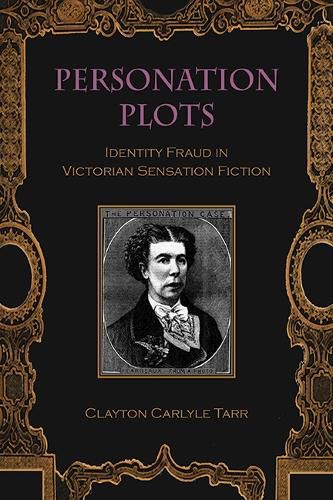Readings Newsletter
Become a Readings Member to make your shopping experience even easier.
Sign in or sign up for free!
You’re not far away from qualifying for FREE standard shipping within Australia
You’ve qualified for FREE standard shipping within Australia
The cart is loading…






This title is printed to order. This book may have been self-published. If so, we cannot guarantee the quality of the content. In the main most books will have gone through the editing process however some may not. We therefore suggest that you be aware of this before ordering this book. If in doubt check either the author or publisher’s details as we are unable to accept any returns unless they are faulty. Please contact us if you have any questions.
The first full-length study of identity fraud in literature, Personation Plots argues that concerns about identity and the body gripped the Victorian consciousness. The mid-nineteenth century was marked by extensive medico-legal efforts to understand the body as the sole signifier of identity. The sensation genre, which enjoyed remarkable popularity in the 1860s and 1870s, at once reflected and challenged this discourse. In their frequent representations of identity fraud, sensation writers demonstrated that the body could never guarantee a person’s identity. The body is malleable and untrustworthy, and the identity it is supposed to signify is governed by the caprices of the human mind and the growing authority of paper matter. Both a wide-ranging literary analysis and a portrait of the age, Personation Plots reads canonical texts by Wilkie Collins, Mary Elizabeth Braddon, and Charles Dickens alongside several lesser-known sensation novels. The study, which anticipates debates over biometric identification practices in our own time, also features brief criminal biographies of two of the nineteenth century’s greatest impostors, Alice Grey and Mary Jane Furneaux, and concludes with an afterword on imposture in the late-Victorian Gothic, and anticipates debates over biometric identification practices in our own time.
$9.00 standard shipping within Australia
FREE standard shipping within Australia for orders over $100.00
Express & International shipping calculated at checkout
This title is printed to order. This book may have been self-published. If so, we cannot guarantee the quality of the content. In the main most books will have gone through the editing process however some may not. We therefore suggest that you be aware of this before ordering this book. If in doubt check either the author or publisher’s details as we are unable to accept any returns unless they are faulty. Please contact us if you have any questions.
The first full-length study of identity fraud in literature, Personation Plots argues that concerns about identity and the body gripped the Victorian consciousness. The mid-nineteenth century was marked by extensive medico-legal efforts to understand the body as the sole signifier of identity. The sensation genre, which enjoyed remarkable popularity in the 1860s and 1870s, at once reflected and challenged this discourse. In their frequent representations of identity fraud, sensation writers demonstrated that the body could never guarantee a person’s identity. The body is malleable and untrustworthy, and the identity it is supposed to signify is governed by the caprices of the human mind and the growing authority of paper matter. Both a wide-ranging literary analysis and a portrait of the age, Personation Plots reads canonical texts by Wilkie Collins, Mary Elizabeth Braddon, and Charles Dickens alongside several lesser-known sensation novels. The study, which anticipates debates over biometric identification practices in our own time, also features brief criminal biographies of two of the nineteenth century’s greatest impostors, Alice Grey and Mary Jane Furneaux, and concludes with an afterword on imposture in the late-Victorian Gothic, and anticipates debates over biometric identification practices in our own time.